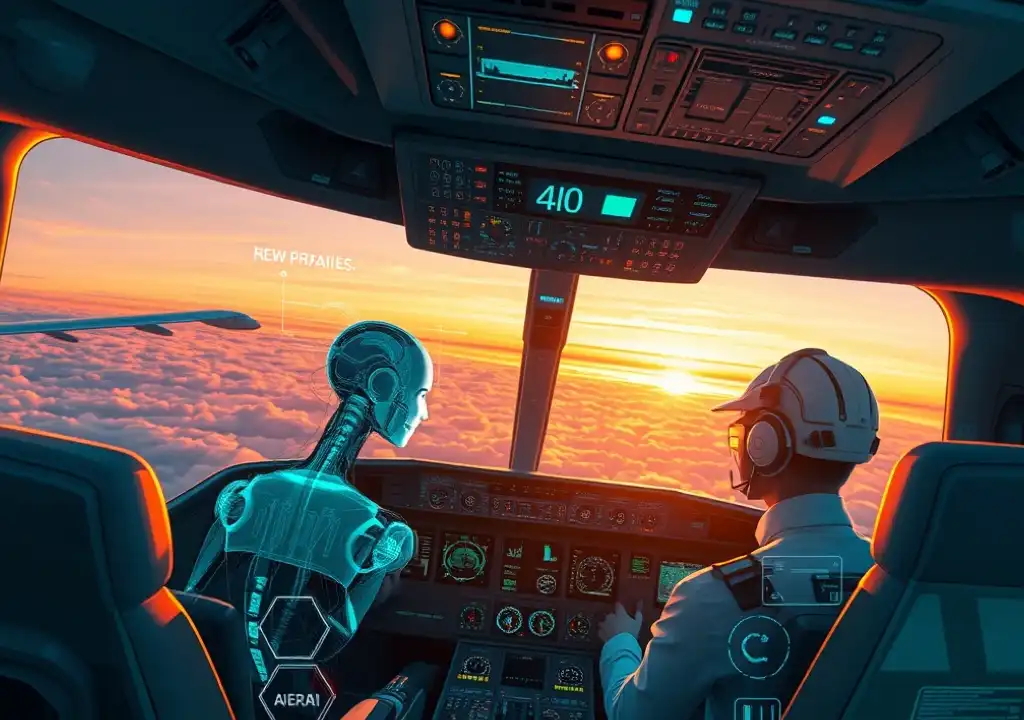Artificial Intelligence is transforming industries – but can it also reduce fatalities in aviation crashes?
Over 100 lives have already been lost in air incidents this year, including a midair collision near Washington, DC, and a plane striking a bus in São Paulo. These tragedies follow a deadly previous year, with 318 lives lost in 11 civilian aviation accidents.
Although rare, fatal crashes provoke intense public concern, renewing fear in flying. In the US alone, 25 million adults experience aviophobia, worsened by emergencies like blown doors or runway skids.
Experts agree that most air accidents are caused by human error.
AI is already enhancing aviation safety in areas like route planning, fuel management, maintenance prediction, and sustainability. But can it go further and prevent air disasters?
“A great deal is already underway, and much more is expected,” said LYTE Aviation CEO Freshta Farzam to Al Jazeera.
“AI is crucial in boosting safety by improving awareness, predictive upkeep, and decision-making. It also plays a major role in traffic control and collision avoidance.”
According to a study titled Artificial Intelligence in Aviation Safety, passenger safety and flight efficiency remain top priorities. Embracing AI is key to aviation’s technological evolution.
In 2023, aviation saw one crash for every 1.26 million flights – the safest record in over ten years. But the following 14 months witnessed more than 400 deaths.
Up to 80% of all air crashes are attributed to human error, with pilots directly responsible for over half.
Still, air travel remains safer than other transport modes, notes the LA-based law firm Panish-Shea-Ravipudi LLP.
“Flight safety depends heavily on operator competence, aircraft condition, and proper training,” they stated.
Adapting to Change
Where exactly can AI make a life-saving difference?
“There’s significant AI innovation in aviation, though much hasn’t reached commercial airlines due to certification rules,” said Amad Malik, chief AI officer at Airport AI Exchange.
“The systems we use now date back decades. However, AI could act as onboard intelligence, detecting mistakes in real time, whether by pilots or controllers.”
He added that change requires shedding outdated practices: “Adding tech without letting go of old systems won’t yield progress. We need to learn, adapt, and evolve.”
The aviation sector is seeing major innovations – notably, the booming air-taxi industry, projected to soar from $4.9bn in 2023 to $80.3bn by 2029.
As demand for fast travel and advanced tech grows, are self-flying planes the answer?
“Errors, fatigue, and poor judgment cause most accidents,” Farzam explained. “AI could help eliminate these, ensuring safer flights. But trust remains the biggest hurdle.”
She said a gradual approach is key: “We won’t see fully autonomous air taxis for at least 15 years. People must adapt to this shift.”
Boeing CEO Dave Calhoun echoed that view last year, stating: “Autonomous flight is real, but confidence and trusted certification must come first.”
At the 2023 World Economic Forum, experts urged people to see AI not as a replacement but as a partner to human pilots.
Already, aircraft rely on precise autopilots and flight systems, able to navigate and land planes in poor visibility with minimal human input.
Still, Malik warned, “Introducing AI into the cockpit too soon could cause more issues, given the complexities of communication with other planes and ground control.”
He stressed that integrating AI into both aircraft and air traffic systems must be synchronized. “An AI pilot can’t take orders via radio like a human one. That’s not viable yet.”
Farzam suggested that AI should work as a co-pilot, stepping in during emergencies to correct errors.
“The next aviation era is here,” she said. “AI won’t just improve safety — it could also drive real, sustainable innovation in global air travel.”
Can AI and Autopilot Aircraft Help Avert Air Disasters?

30
Nov
